Why Botswana should be your next safari destination
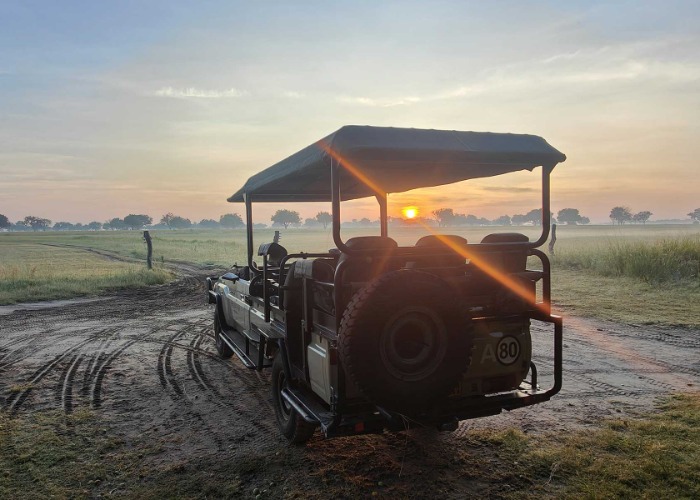
If you’ve got Africa’s wildlife and wonders set in your sights, then Botswana is the best place to spot the Big Five and so much more, says James Draven
Xhanse has to take a live scorpion out of his mouth to answer me. By doing so, he somewhat negates my question, which was:
“Why have you got a live scorpion in your mouth?”
“I’m cleaning its eyes,” he tells me, and – delicately holding the scorpion’s stinger between his thumb and forefinger – he pops the creature back into his gob, like a lolly. Its legs wiggle against his lips in protest.
The bushman is giving us a short walking tour of the desert landscapes around Makgadikgadi Salt Pan in Botswana, showing us the traditional practices of his people: a glimpse into an ancient culture beyond my ken.
I understand the benefits of the medicinal berries he has shown us, and of those that can be quickly fermented into an inebriant. I’m interested in the nomads’ methods of fire-lighting, their hand-crafted smoking pipes and the games they play to pass the night around the fire. Moments ago, however, Xhanse dug a scorpion out of the dusty earth and he’s since had me baffled.
Improbably, he removes the saliva-cleaned scorpion from his mouth and delicately perches the creature on top of his four-year-old son’s head. Tail taut, the scorpion stands stock-still, as dramatic-yet-static as a plastic toy from a cereal box.
“Because it is on a flat surface,” says Xhanse, as his motionless son rolls just his eyes upwards to look at the tourists snapping pictures of him, “It won’t sting him.”
The purpose, I finally understand, is to showcase the San people’s mastery of the natural world – their symbiosis with their land. Through proper handling, the scorpion poses no threat to the boy, but one point still eludes me.
“Why did you need to clean the scorpion’s eyes?” I ask.
“So you can see them,” Xhanse replies.
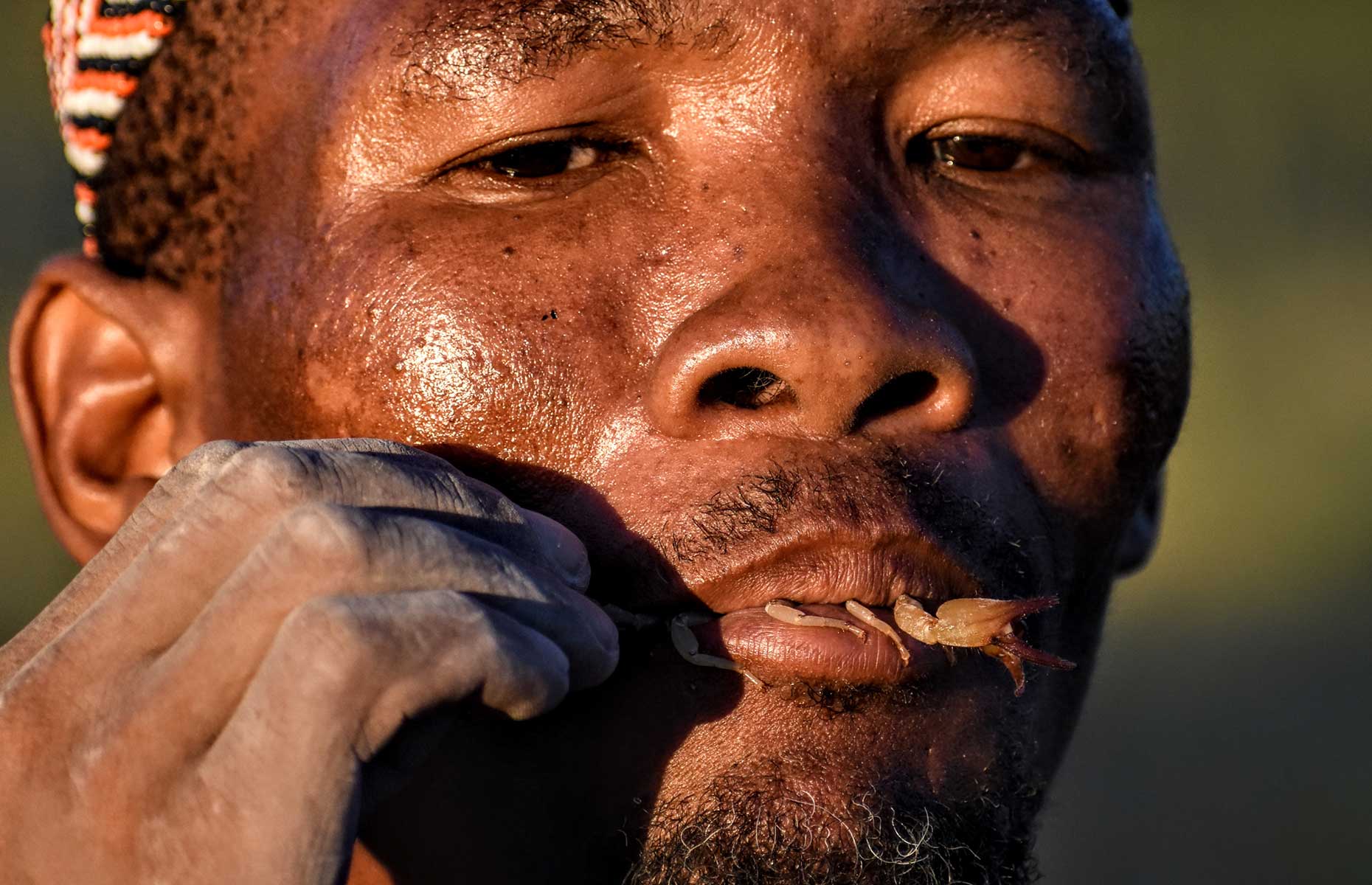 James Draven
James Draven
More spots than a leopard
A Botswana safari is all about spotting things, of course. That’s the first question my guide, Robbie Garenamotse, asks when I clamber into the back of his open-topped 4x4 outside Shinde, a camp on an island in the Northern Okavango Delta: “What do you want to see?”
Robbie will be our guide over the course of the next four days, both here, and then at Dinaka, our lodge in the Central Kalahari Game Reserve. It seems a funny question, though, since wildlife can’t be kept to a tourist timetable. It’s always a matter of chance if you’ll catch sight of one of Africa’s Big Five – lion, leopard, rhinoceros, elephant and buffalo – but Botswana holds a certain status among safari enthusiasts.
Although the country is dominated by the Kalahari Desert, Botswana’s spectacular Okavango Delta is one of the largest inland flood plains on the planet. Fed by the Okavango River, it transforms the arid desert into a lush oasis, attracting a staggering array of species.
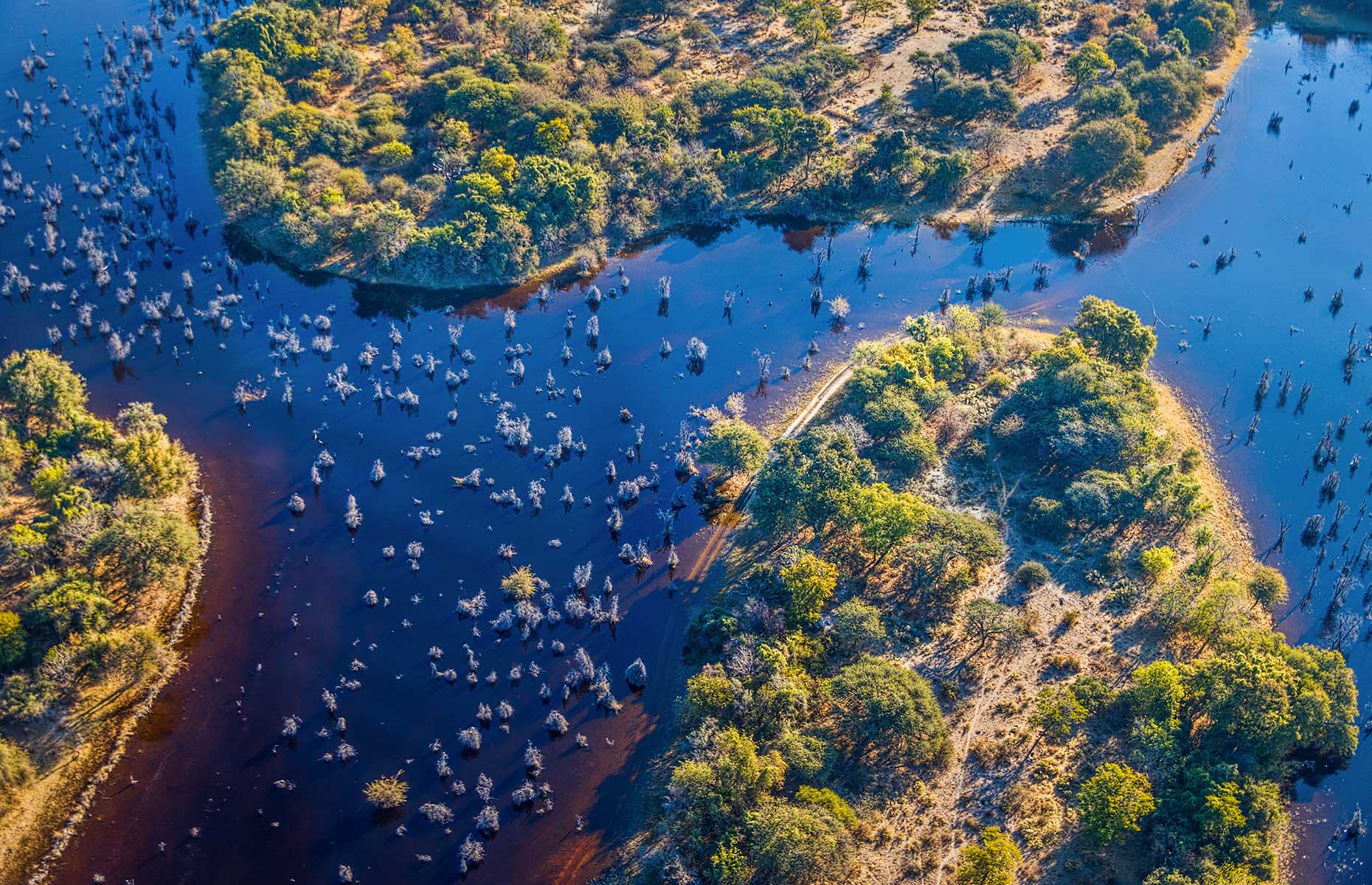 Vadim Petrakov/Shutterstock
Vadim Petrakov/Shutterstock
Accordingly, Shinde’s guests can be demanding. “I was promised wild dogs and a honey badger,” says one overbearing guest. “And I wanna see a lion kill,” he adds. I smile and suggest he trail a limb outside of his safari vehicle.
Before the end of our trip, as we gaze upon a pack of African wild dogs lazing in long grasses – their coats patterned with unique, psychedelic constellations – the guest has, very literally, ticked all of his requested sightings off his Botswana checklist: a booklet that each guest receives on arrival. The gesture, on the part of our lodge, is a sign of confidence in the region’s wildlife.
I have just one request of Robbie. I’d like to see a leopard. I’ve been on safari in Africa numerous times, but only once spotted one in another country: at a distance; at dusk; through dense foliage. Squint as hard as I might, I could barely see it.
Robbie seems unperturbed at the request, however, and 30 minutes later I’m looking at a leopard as she slinks towards me, just a few feet away. And she is staring straight back into my eyes.
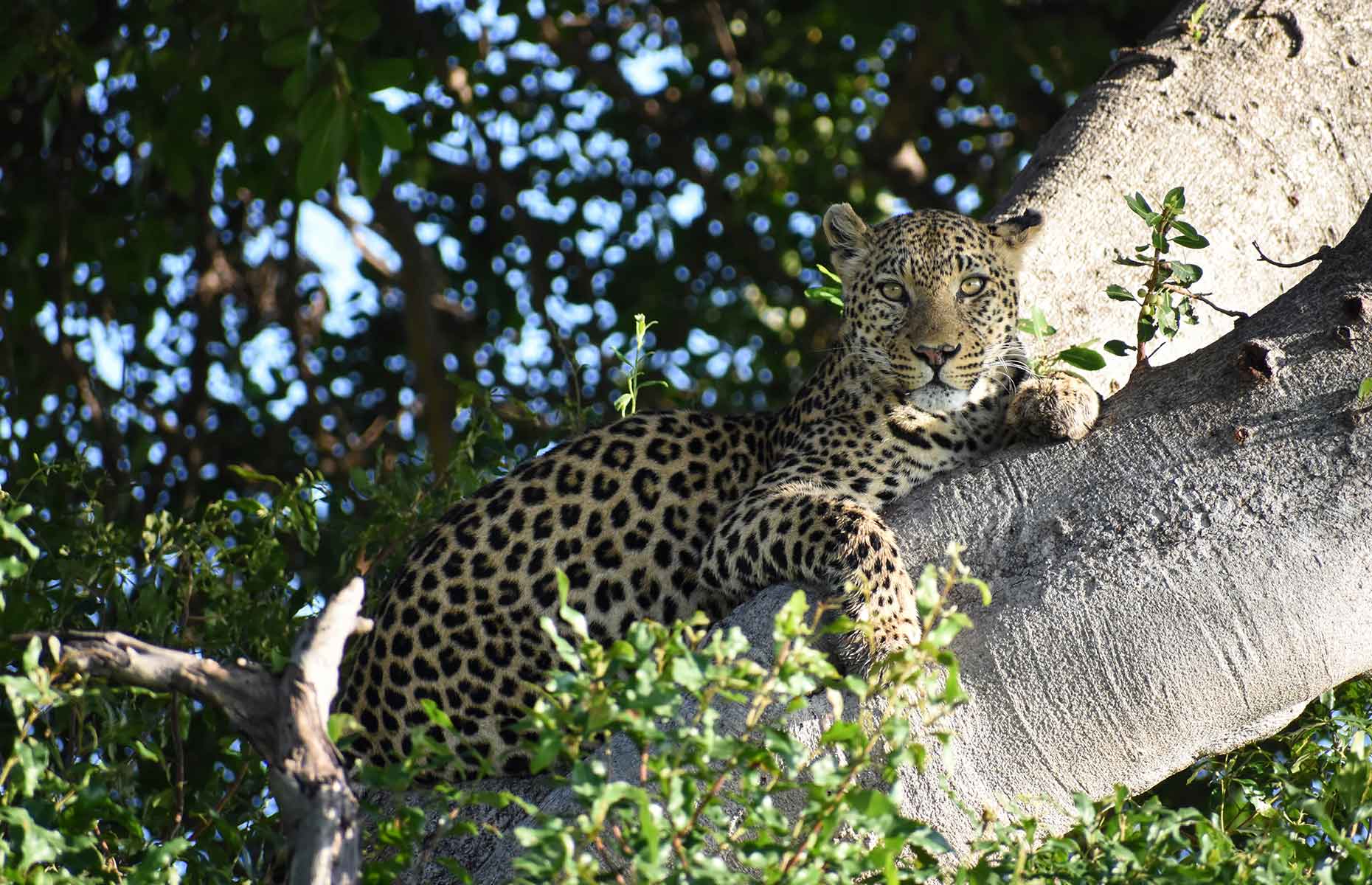 James Draven
James Draven
READ MORE: A guide to family safari holidays
Delta variance
These wetlands are home to a stunning array of animals, from wallowing hippos and basking Nile crocodiles to elephants, using their trunks as snorkels as they gleefully gorge on lily pads and papyrus grass. Tiny long-reed frogs, barely larger than a grain of rice, cling to stems that bob in the breeze. Hundreds of birds flock to the area too, such as the varicoloured lilac-breasted roller, sharp-eyed snake eagles, and we’re even lucky enough to see a Pel’s fishing owl – a bucket-list sight for birders, found only in wet regions of sub-Saharan Africa.
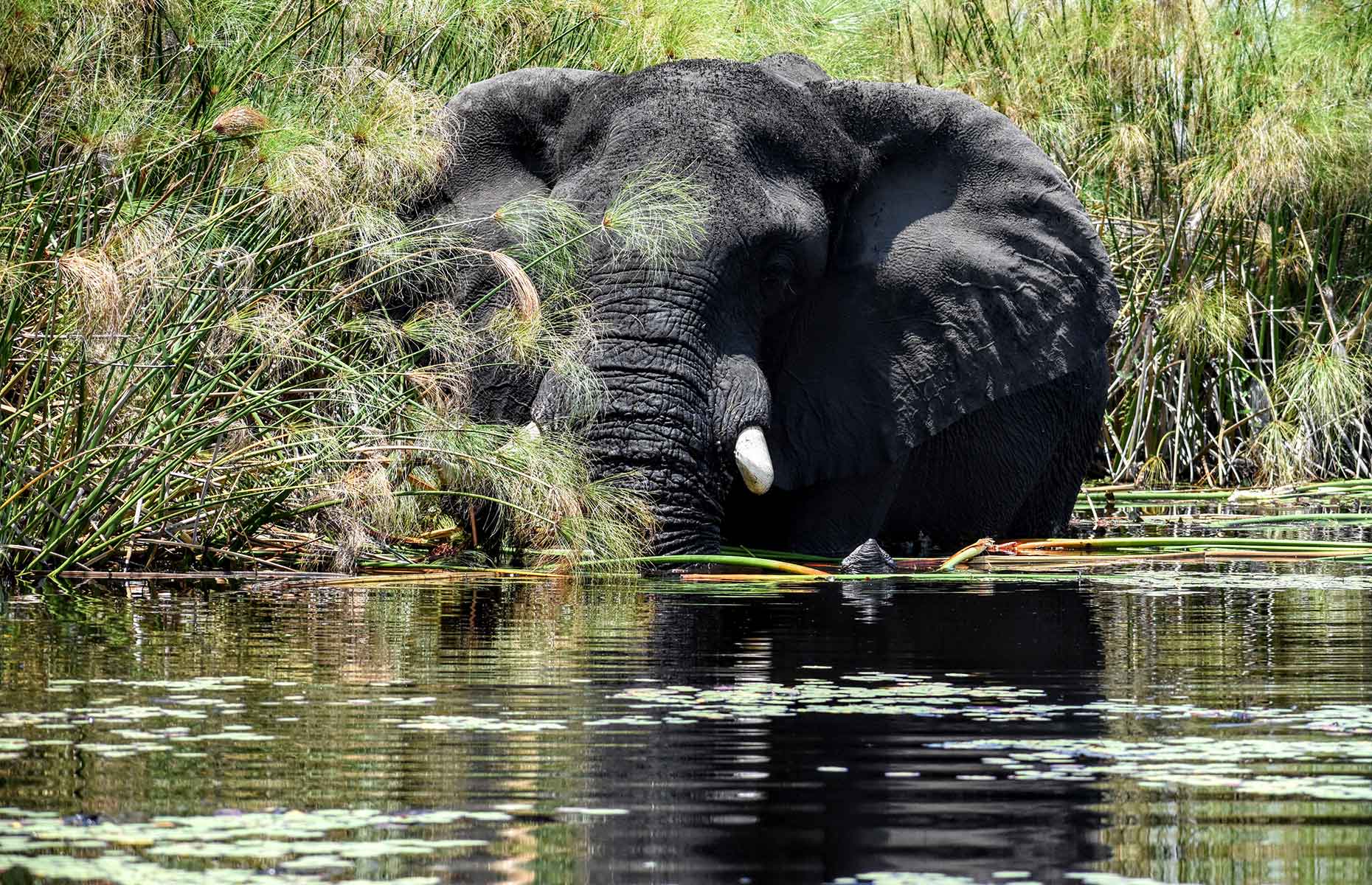 James Draven
James Draven
Along with the usual game drives, you can traverse the delta’s waterways in a traditional mokoro. These dugout canoes glide through the reeds, providing the hypnotic opportunity to observe wildlife in silence, save for the sonorous chirp of birdsong, the lap of water, and the gentle thunk of paddle against gunwale.
Poaching, water diversion for human use and fertilisers used in farming threaten this delicate habitat, and the delta’s wildlife needs to be left to sink or swim, free from the calloused hands of human intervention. However, when I see a flap-necked chameleon paddling for its life, on the brink of drowning, I can’t help but dip a few digits into the murk.
It has clearly fallen from the reeds and – seemingly mocking the chameleon as it struggles against the river’s current – a dragonfly lands on its head and uses it as a raft. It looks like a cobalt fascinator. I check with my guide for approval, then plunge my hand into the water and let the chameleon climb aboard to safety.
It clutches on to my fingers for dear life and, remaining a vivid green since I’ve clearly already spotted it, the chameleon swivels its eyes towards me to better look at its unlikely saviour.
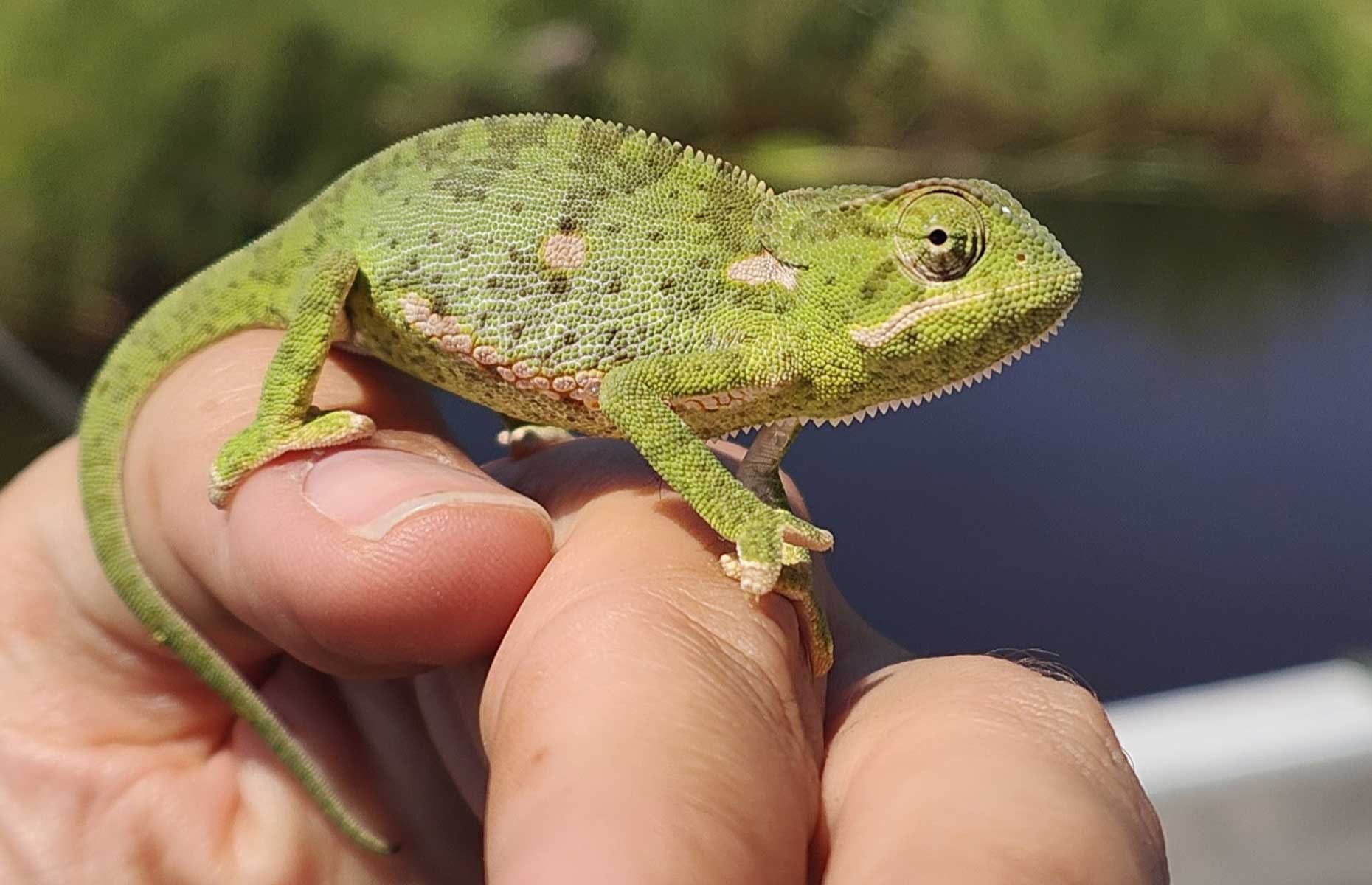 James Draven
James Draven
READ MORE: A guide to exploring South Africa's Garden Route
Night vision
At the heart of the Northern Kalahari Desert is Dinaka. Filling its own private waterholes in the midst of arid, unforgiving terrain, the luxury camp is an oasis for both wildlife and safari travellers alike.
I’ve come here because of the rare opportunities to go on walking safaris to see smaller species of wildlife, and to go on night drives to find nocturnal creatures. During the latter we spot bat-eared foxes, lions stalking night-blind prey and the notoriously fierce honey badger. The Napoleon of African wildlife, the honey badger is known for fighting animals of up to 10 times its size, enduring hundreds of bee stings in order to feed on their larvae, and – thanks to its immunity to snake venom – hunting serpents that would be deadly to lions.
Come dawn, just in front of the camp, the treetops roar with the cumulative flapping of hundreds of thousand of tiny wings as nebulous murmurations of red-billed queleas shift and merge as one. Amorphous and unfathomable, they move together in such numbers that the yellow-billed kites and tawny eagles that have come to feed on them are overwhelmed. Unable to fix a single target, like trying to follow a point of light amid television static, the raptors are blinded by sight.
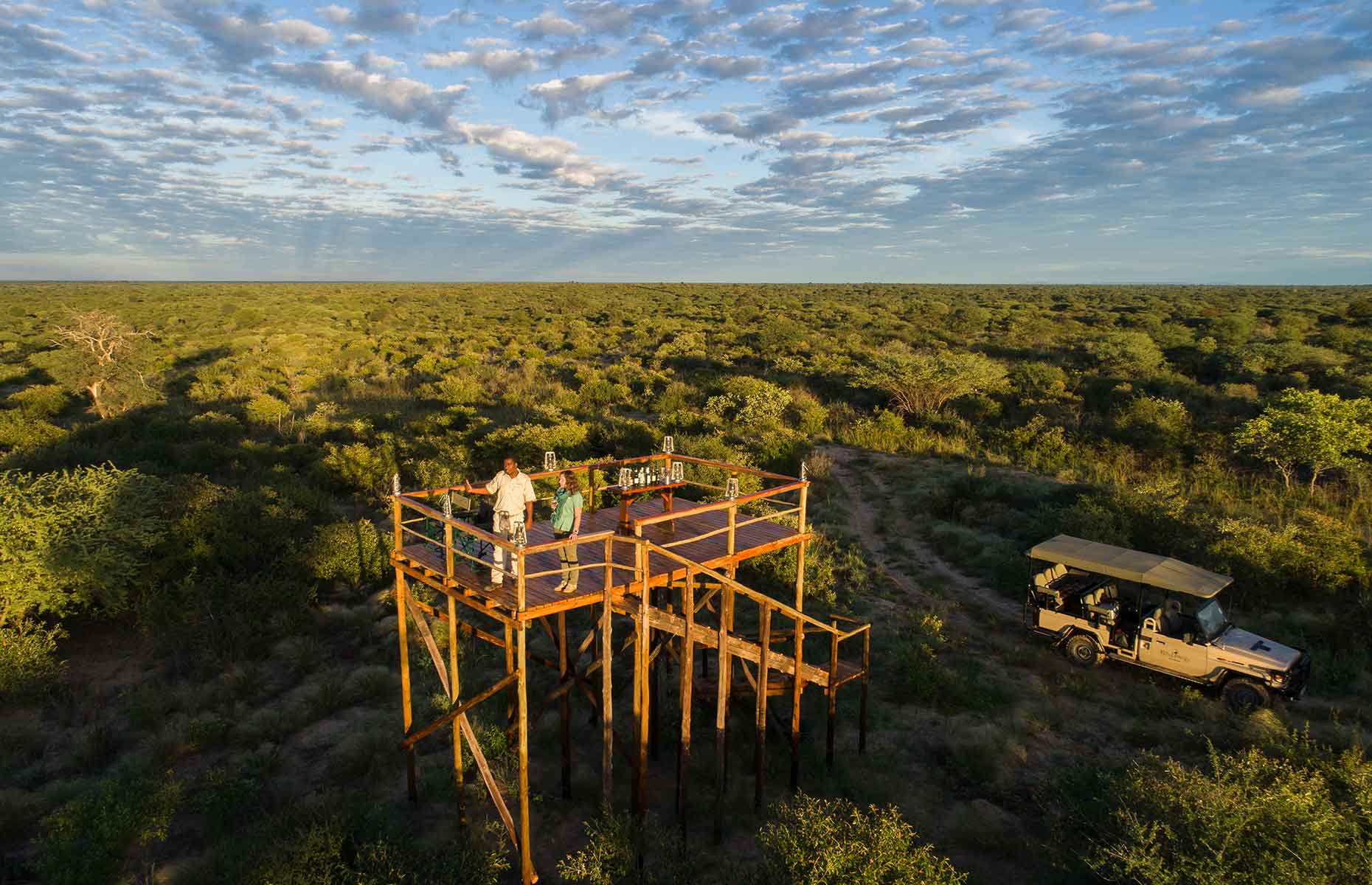 Ker & Downey Botswana
Ker & Downey Botswana
Simple things
“Is it OK up there?” I ask, as I feel the meerkat wobble on top of my head, its tiny claws clutching on to the fabric of my hat.
The meerkat teeters, shuffling on its back legs, trying to get a good footing. It’s standing upright with its front paws raised to its chest in its trademarked pose. Its head is swivelling, casting glistening, blackcurrant eyes across the horizon.
“Oh, yes, he’s very happy. You’re the tallest here, so you’re doing him a favour,” replies Desmond, meerkat expert and guide at Jack’s Camp. “A meerkat will always look for the high ground to give him the best lookout spot for predators.”
 Natural Selection
Natural Selection
Jack's Camp, on the edge of the Makgadikgadi Salt Pans, is a safari experience like no other. If you can drag yourself away from your cavernous tent (my room-under-canvas contained three four-poster beds), you can witness the otherworldly landscapes of the salt flats. Shimmering like mirrors in the sunlight – surrounded by hot-pink flamingos, secretary birds, and marabou storks – the horizon is etched with a straight edge. Sunsets blaze red and gold.
The biggest draw today is its community of habituated meerkats – who will gladly scale to the top of your head for an unrivalled vantage point – but come the dry months you can camp out on the salt pans and sleep beneath the stars as our ancestors did, 200,000 years ago. This is literally Eden, the lands from which all modern humans originated.
“It’s only in the Southern Hemisphere that all twenty of the brightest stars can be seen,” says Desmond, as the sky fades though violet to indigo. The unblinking, reflected lights of distant planets burn myriad punctuation marks that signal the end of my journey through Botswana.
 Jack's Camp (Image: Natural Selection)
Jack's Camp (Image: Natural Selection)
In a land devoid of artificial illumination, the Milky Way frosts the heavens like cosmic manna, and the ancient lights of twinkling constellations warp me back to the classical era.
“There’s the Dog Star, Sirius, one of the stars that makes up Canis Major. And there’s Leo, the brightest star of which is Regulus,” says Desmond. “That’s Taurus, the bull, dominated by the red star Aldebaran. Within Taurus you can faintly see the Seven Sisters there.”
The ancient Greeks claimed that, if you could see the seven main stars of the asterism Pleiades with the naked eye, you had what we now call 20/20 vision. They’re a little blurry for me though, so I take off my glasses, hold them to my mouth to fog the lenses with my breath, and I give them a quick wipe.
“And there’s Scorpius, looking down at us,” says Desmond, as I place my spectacles back on my head. I stand stock-still to concentrate: a petrified pillar of salt on these flats, with my eyes cast up to the stars.
“Can you see it?”
It’s one of the few constellations that actually looks anything like the beast it represents, its celestial stinger eternally poised to strike.
“Oh, yes,” I reply. “I just hope it doesn’t see me.”
Getting there
Audley Travel offers tailor-made trips to Botswana. An eight-night trip including two nights at Shinde, two nights at Dinaka and two nights at Jack’s Camp costs from £9,300pp (based on two travelling). Price includes economy flights, light aircraft transfers, fully inclusive accommodation and safari activities. For more information, visit audleytravel.com
Main image: James Draven
READ MORE: These striking images reveal the beauty of Africa's wildlife
Comments
Be the first to comment
Do you want to comment on this article? You need to be signed in for this feature